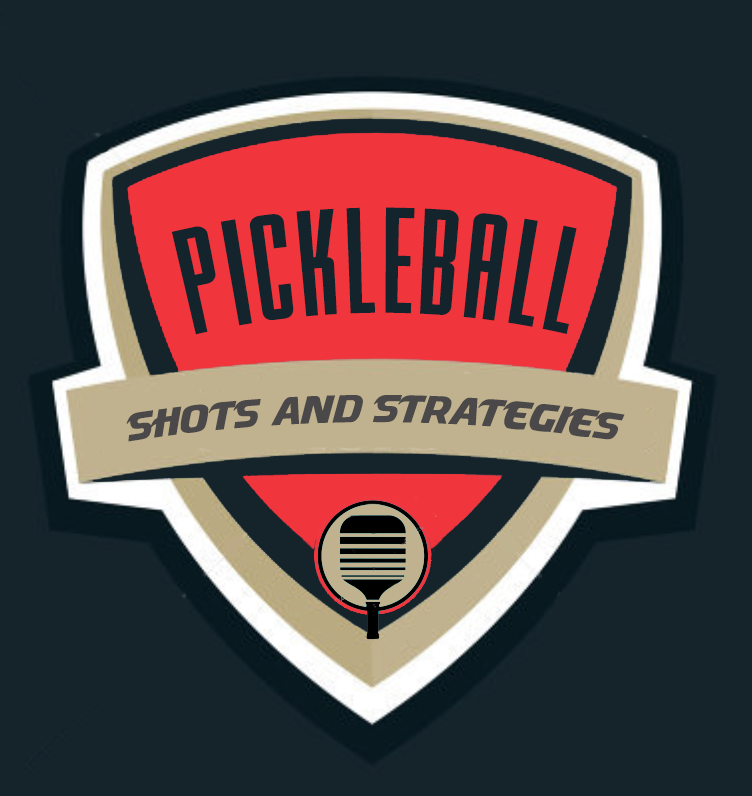THE RETURNING TEAM
The returning team wants to move and position both players up at their NVZ Line.
The standard positioning for the team returning the serve is one player hitting a return and moving forward while the partner is positioned up at the NVZ line prior to the serve. With the returner advancing forward, this team will be hitting volleys, half volleys, dinks, and an occasional overhead. Generally speaking, this team has the advantage because being closer to the net makes it easier to hit balls back over the net and more angles are possible. Since this strategy places you in position to be hitting volleys and dinks, you will want to develop the techniques for these shots. Bear in mind, the two players on the receiving team are positioning themselves to be at their NVZ line and they will be hitting volleys. ( Note to Beginners: Why would you run to the net without having the skills to hit volleys? )
The Returning team is now up at their NVZ line and has formed a solid defense to hit volleys back at the opponents who often are moving forward. The majority of recreational players will hit drives because they have not developed the more difficult drop shot to more effectively move forward.
The return of serve can be hit in different ways which are discussed in the chapter for this particular shot. The most important aspect is to get the ball in play. Do not miss this shot because your opponent will score a point. The depth of your shot is important and the deeper you return the ball is to your advantage.The depth of your shot will give you more time to advance forward, more time to react to your opponent’s shot, makes a more difficult shot for your opponents, and makes it a farther distance for them to get up to their NVZ line. As your opponents move forward, you want to place your shots in front of their feet which makes them hit up on the ball and hit a more defensive shot.
In competition, the return of serve should be hit to the weaker player. In recreational play, hit the return of serve to both players so both get a chance to hit a third shot. If you are playing recreationally and one player has the better third shot drop and you want to play a dinking game, then hit the ball to that player. Conversely, if one player generally hits a drive and you want to hit volleys, then hit your return to that player.
When you get up to the NVZ line, get balanced with your stance, get your paddle up, and ready to volley. Most opponents will hit their third shot and move forward. You now want to hit your next shot in front of your opponents which will force them into hitting up on the ball. It is always to your advantage to have your opponents hitting up. You will have to estimate where in the court that they will be and place the depth of your shot accordingly. The three basic depths are deep and about one foot inside the baseline to keep them back, a shot at their feet as they move through “No Man’s Land”, and a shot into the kitchen to establish the dinking game.
It is important to understand that when all 4 players are up, the team that hits a high ball allowing the other team to attack generally loses the point. When you are up and your two opponents are up also, you want to understand which balls you can attack more successfully and which balls you should play defensively.
There is a strategy concept called the 80-20 percentage rule. This is where you attack on higher balls that allows you to win 80% of these points. When the ball is too low which forces you to hit up, your percentage of winning these points is reduced. There is a fine line between having the ball be high enough to attack or too low forcing you to hit up on the ball to clear the net. At the 5.0 level, the height of the ball being 2 inches too low to attack can be the difference of winning or losing the point. A good analogy is a baseball batter and the strike zone. There is a strike zone and a good batter will only swing at balls in that zone.
Patience is a commonly used word to emphasize the importance of waiting for the correct ball to attack. Until you get this high ball, you want to have the skill set to keep the ball in play and you want your shots to bounce in front of your opponent’s feet. Placement versus power are opposites and good players understand the balance between the two. In recreational play, develop the skill for placement and resetting the point versus hitting the ball directly at your opponents.
